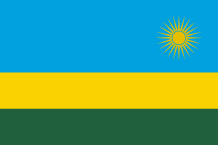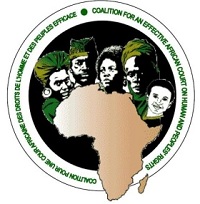This post looks at the African Court’s decision on Rwanda’s withdrawal of its Article 34(6) declaration (Additional Declaration). Many African Court observers will be well aware of this decision that was ostensibly made in June 2016, but seems only to have been issued publically in September 2016 (more on this timeline later). So this post comes a little late to the party, but one potentially useful outcome of this delay it that it might turn a little attention back to the Africa Court’s decision, the upshot of which is that Rwanda’s withdrawal takes effect on 1 March 2017 (you can see our Rwexit countdown on The Monitor homepage). Hopefully this post will therefore remind everyone, especially Rwandans, that they have only a short amount of time left before the African Court will be barred from considering their cases- with only one month to go its time to use it before you lose it!
For readers who may be just coming to this only now it is useful to recall that the Additional Declaration discussed here, is a declaration pursuant to Article 34(6) of the African Court’s Protocol that must be signed by a AU member state in addition to signing the Court Protocol. By signing the Additional Protocol individuals and NGOs with observer status before the African Commission can petition the African Court directly. Unless a member state has signed this Additional Declaration, individuals and NGOs cannot apply to the African Court, thus severely curtailing access to the African Court.

Background
The saga of Rwanda’s withdrawal has been played out over almost a year, and I have written about it here , here and here. This latest decision by the African Court is essentially the ‘big one’. In brief, Rwanda signed up to the African Court by ratifying the African Court Protocol in May 2003. In January 2013 Rwanda also signed the Additional Declaration thus allowing Rwandans and NGOs direct access to the Court. One Rwandan who took advantage of this was Victoire Ingabire the leader of the opposition political party FDU Inkingi. Ingabire is currently serving a 15 year prison sentence having been convicted of genocide-denial and terrorism related crimes in 2013. Ingabire petitioned the Court in October 2014 alleging that her trial contravened her right to a fair trial as protected under the African Charter on Human and Peoples’ Rights.
From what happened next it seems fair to say the Rwandan government was not overly pleased with Ingabire taking her case before the African Court. In what could be seen as a direct attempt to stifle the case before it could gain any momentum, Rwanda took the unprecedented decision to withdraw its Additional Declaration by depositing an instrument of withdrawal with the African Union Commission, arguing that with this withdrawal all Rwandan cases (including Ingabire’s) should be suspended. This is the first time in the African Court’s young history that a member state has sought to withdraw its Additional Declaration.
The African Court made a number of preliminary decisions, but on 3 June 2016 rendered its decision on Rwanda’s withdrawal of its Article 34(6) declaration, although to the best of my knowledge this decision was not made public until September 2016, something I will discuss later. To give readers the best chance of understanding this momentous decision I will first review the parties arguments, then summarize the African Court’s decision, before offering a little analysis.
The Parties Arguments
Having deposited its instrument of withdrawal with the African Union Commission (AUC), Rwanda argued that by virtue of the principle of “parallelism of forms” only the AUC was empowered to

decide the withdrawal and its effects. Rwanda contended that the African Court and the parties in the case “have nothing to do” with the withdrawal and its effect once it instrument of withdrawal was deposited with the AUC and that the debate regarding withdrawal was a matter for the African Union.
Ingabire argued that whilst preventing member states from withdrawing made voluntarily may be “too radical a position”, this should not allow member states to withdraw “at any moment and in any manner”. Ingabire contended that since there were no provisions within the African Court Protocol concerning what happens in the case of a withdrawal of the Declaration, the African Court should be guided by Article 56 of the Vienna Convention on the Law of Treaties (Vienna Convention).
Ingabire further argued that the African Court should be guided by the principle of pacta sun servanda, i.e. that parties to a treaty perform their duties in good faith and that this meant any withdrawal must take effect only after a “reasonable amount of time” to serve as a cooling off period. In support, Ingabire pointed to the International Court of Justice case Nicaragua v United States of America, Jurisdiction and Admissibility Judgement, which argued for a reasonable time for withdrawal from treaties that contain no termination provision. Ingabire argued that requiring advance notice of withdrawal is to discourage “opportunistic defections” that would cause the treaty base system to “unravel”. Ingabire also pointed to the European Court of Human Rights and Inter-American Court of Human Rights that provide for notice periods of six and twelve months respectively, arguing that the African Court should apply a similar standard to withdrawals.
As to the effect on her case, Ingabire argued that Rwanda’s withdrawal of its Additional Declaration should have no effect on cases pending before the African Court based on the principle of non-retroactivity, relying on Article 70(1)(b) of the Vienna Convention which provides that the termination of a treaty, unless otherwise agreed, does not effect preexisting obligations or legal situations. Ingabire argued that complaints submitted to The African Court after withdrawal would still be admissible to the extent that they address actions in Rwanda that occurred during the period when Rwandan was still bound by the Additional Declaration.
The Court also considered an amicus brief filed by the Coalition for the African Court (Coalition). In its brief the Coalition focused on two issues: first whether Rwanda was entitled to withdraw its Declaration and second the legal effects of the withdrawal on pending proceedings.
Similar to Ingabire, the Coalition argued that since there was a lack of express provision in the African Court Protocol, Rules of the Court or Charter on the withdrawal of declarations, it should rely on Article 56 of the Vienna Convention. The Coalition further argues that in making the Additional Declaration, Rwanda is under international obligations, and that any reservations included pursuant to Article 19(c) of the Vienna Convention must not be incompatible with the object and purpose of the treaty. It also submitted that withdrawal from the Additional Declaration was inconsistent with the “spirit” of the African Union’s human rights instruments.

As to what effect the withdrawal has on pending proceedings, the Coalition argued that Rwanda is required to serve notice of its intention to withdraw at least 12 months in advance to comply with Article 56(2) of the Vienna Convention and that Rwanda’s request to suspend pending cases breaches the provisions of international law on treaties, the Charter and Protocol. It noted that the role of the Court is to preserve, complement and reinforce progress made in the protection of human rights across Africa by the African Commission which includes ensuring compliance with the criteria on the equality of parties to a trial whether or not a party is a sovereign state. The Coalition also contended that the Court should aim at ensuring observance of the right of any victim to seek effective legal remedy in line with Article 7 of the African Charter and the Principles on the Right to a Fair Trial and Legal Assistance in African, as adopted by the African Commission in 2003.
The Decision
The African Court first dealt, albeit briefly, with Rwanda’s argument that the African Union Commission rather than the African Court had jurisdiction to decide on the issue of withdrawal. Relying on Article 3(2) of the Protocol, which states that in the event of debate over whether the Court has jurisdiction the Court shall decide, the African Court stated that it was going to do just that and dismissed Rwanda’s submissions.
With regards to whether Rwanda’s withdrawal was valid, the African Court acknowledged that its Protocol does not contain any provisions for the withdrawal from the Protocol or the Additional Declaration. The African Court therefore first considered whether the Vienna Convention applies in the current situation as argued by Ingabire and the Coalition. The Court noted that the Additional Declaration under Article 34(6) emanates from the Protocol which is subject to the law of treaties, but the Additional Declaration itself is a unilateral act that is not subject to the law of treaties, and therefore the Vienna Convention does not apply to the Additional Declaration. In a corrigendum to the ruling issued in September 2016 the African Court amended its reasoning on this point to read that with regard to the applicability of the Vienna Convention on the Additional Declaration, whilst the Additional Declaration emanates from the African Court Protocol which is subject to the law of treaties (i.e. the Vienna Convention) the Additional Declaration itself is a unilateral act that is not directly subject to the law of treaties. The African Court therefore found on the amended reasoning that the Vienna Convention does not apply directly to the Additional Declaration but can be applied by analogy, and the Court can “draw inspiration from it when it deems appropriate”.
Instead the African Court held that it was to be guided by “relevant rules governing declarations of recognition of jurisdiction as well as the international law principle of state sovereignty”. In particular, concerning the rules governing recognition of jurisdiction of international courts, the African Court noted that “related declarations” are generally optional in nature, relying on the provisional provisions relating the recognition of jurisdiction of the International Court of Justice (Art 36(2) of the ICJ Statute), European Court of Human Rights (Art 46 of the European Convention on Human Rights, 1950 (before the entry into force of Protocol No. 11 to the Convention for the Protection of Human Rights and Fundamental Freedoms)) and Inter-American Court of Human Rights (Art 62(1) of the American Convention on Human Rights).
The African Court found that the Additional Declaration is of a similar nature to these other declarations, since although it emanates from the Protocol, the Additional Declaration is optional in nature and is therefore separable from the Protocol and is subject to withdrawal independent of the Protocol. The African Court reinforced this view on the optional nature of the declaration from the principle of state sovereignty. It held that as far as unilateral acts were concerned, state sovereignty commands that states are free to commit themselves and they retain discretion to withdraw their commitments. Therefore, the African Court found that Rwanda was entitled to withdraw its Additional Declaration and that such withdrawal is valid under the Protocol.

Turning then to the conditions of the withdrawal, the African Court held that even if withdrawal is unilateral the discretionary character of withdrawal “is not absolute”, particularly where the act, in this case signing the Additional Declaration, creates rights to the benefit of third parties, the enjoyment of which require legal certainty, in other words, the signing of the Additional Declaration not only effects Rwanda per se but Rwandan individual and NGOs who get the right to directly petition the African Court. The African Court found that in such circumstances when states are allowed to withdraw they should be required to give prior notice. The Court also found that a notice period was necessary to prevent the abrupt suspension of rights which would inevitably impact the rights of individuals and NGOs, the very holders of the rights, and that any immediate withdrawal without notice has the potential to weaken the human rights protection regime provided for in the African Charter. The African Court then considered the case of Bronstein v Peru, where the Inter-American Court of Human Rights made a finding on the basis of the principle of legal certainty, holding that formal notice of 12 months would need to be given in the case of withdrawal for the sake of juridical security and continuity (see in particular para. 24(b)). Taking all this into account, the African Court found notice is compulsory in cases of withdrawal of the Additional Declaration.
As to the period of notice, the African Court was inspired by the practice of the Inter-American Court of Human Rights and Article 78 of the American Convention on Human Rights as applied in the case of Bronstein v Peru which provides for 12 months, and the notice period found in Article 56(2) of the Vienna Convention. The African Court therefore found the period of one year shall apply to the withdrawal of Rwanda’s declaration.
Finally, as to the legal effects of the withdrawal, the African Court considered two distinct issues. The first, that the act of withdrawal will only take effect after the expiry of the 12 month notice period. Therefore, the withdrawal of Rwanda’s Additional Declaration will take effect from 1 March 2017. Second, the possible effect of the withdrawal on pending cases. The African Court found that Rwanda’s actions cannot divest the Court of jurisdiction it has to hear “the matter” (presumably the Ingabire case), a position supported by the principle of non-retroactivity which stipulates that new rules apply only to future situations. The African Court therefore held that Rwanda’s notification of intention to withdraw its Additional Declaration has no legal effects on cases pending before it.
Comment and Analysis
Rwanda’s arguments on withdrawal appear to have been placed solely on submission that having deposited its withdrawal of its Additional Declaration with the AUC, the issue was out of the African Court’s hands. This position can be best described as hopeful and was unlikely to ever to succeed since the African Court is divested with the express power to consider challenges to its jurisdiction itself. Indeed, the chances that the African Court was going to leave a matter as important as this to the AUC was always extremely unlikely.
With jurisdiction firmly established, and Rwanda’s arguments seemingly spent, the African Court was left to consider whether the withdrawal was in fact allowed and if so when it would take effect and what the effect would be. In the end the African Court appears to have taken the pragmatic line to follow the Vienna Convention, Inter-American Court and European Court and grant the withdrawal subject to a 12 month notice period.
It is interesting to note the African Court’s rather complicated finding on why the Additional Declaration was not directly under the remit of the Vienna Convention. This convoluted and somewhat unnecessary line of reasoning seems to have played a large part in the delay of the judgement being rendered publicly which I will discuss further below and seems to have been an attempt to clarify a situation which needed little clarification. To simply say that the Additional Declaration is optional, but is clearly contained within the African Court’s Protocol and Rules and therefore is subject to the Vienna Convention seems like the most common sense approach to the issue and follows international practice. Despite this issue however, the rest of the decision seems entirely in line with international practice and Rwanda can have little to complain about.
Two issues are however worth exploring a little further. The first is the timing of the decision. Rwanda filed its withdrawal at the end of February 2016. The official decision on jurisdiction was dated 3 June 2016 yet to the best of my knowledge this decision was not made public until much later in September 2016. The reason for handing down the decision but not making it public is curious to say the least. It is true that alongside the June “decision” (I put June in quotes since the date seems to lose much of it relevance if it wasn’t actually available to the public at that point) the public decision that did emerge also included a corrigendum dated 3 September 2016. So what appears to have happened is that having rendered the decision in June, the African Court decided to amend its reasoning slightly. But the point of a corrigendum is usually to correct a judgement or decision already out in the public domain. It seems strange not to issue the decision publicly in June and wait until September to issue it publicly but with a corrigendum attached. In these circumstances, the decision should in any event really be considered handed down in September 2016. Of course the point here is that a delay of seven months is huge when considering what was resting on the outcome, and fairly extraordinary bearing in mind the outcome- known by the African Court since June- was a decision to impose 12 month notice period. Simply put then, the African Court rendered its decision telling the public, and most importantly Rwandans, that it had 12 months left before the Additional Declaration was withdrawn with only six months left of the notice period. Put another way, the African Court halved the notice period available to Rwandans, a curious decision to say the least especially given that the route taken was fairly uncontroversial and didn’t have to deal with much in the way of challenges from Rwanda itself.
The second issue to highlight is that whilst the decision is clear that cases currently pending before the African Court are not affected, it leaves at least two other scenarios that the African Court did not explicitly deal with. First, future cases filed before 1 March 2017, that is to say cases filed between the rendering of the decision and 1 March 2017, although these are presumably safe since the African Court clearly stated withdrawal takes effect on 1 March 2017. Second, and this may be more complicated, cases filed after 1 March 2017 but relating to events occurring before the 1 March 2017. This scenario is especially applicable to cases where delays have occurred whilst bringing cases domestically in order to fulfil the exhaustion of local remedies requirement. Certainly the requirement that applicant’s first exhaust local remedies has the potential to stymie cases being filed before the African Court by 1 March 2017 and this may be an ongoing issue that the African Court will have to resolve.
So, in sum we have a fairly uncontroversial but nevertheless momentous decision, the date of which is by far the most important result 1 March 2017. One last thing though, check the African Court website and there is no mention of the momentous decision on its homepage, something we have tried to rectify at The Monitor with out Rwexit countdown, which you can find here. Use it before you lose it!
